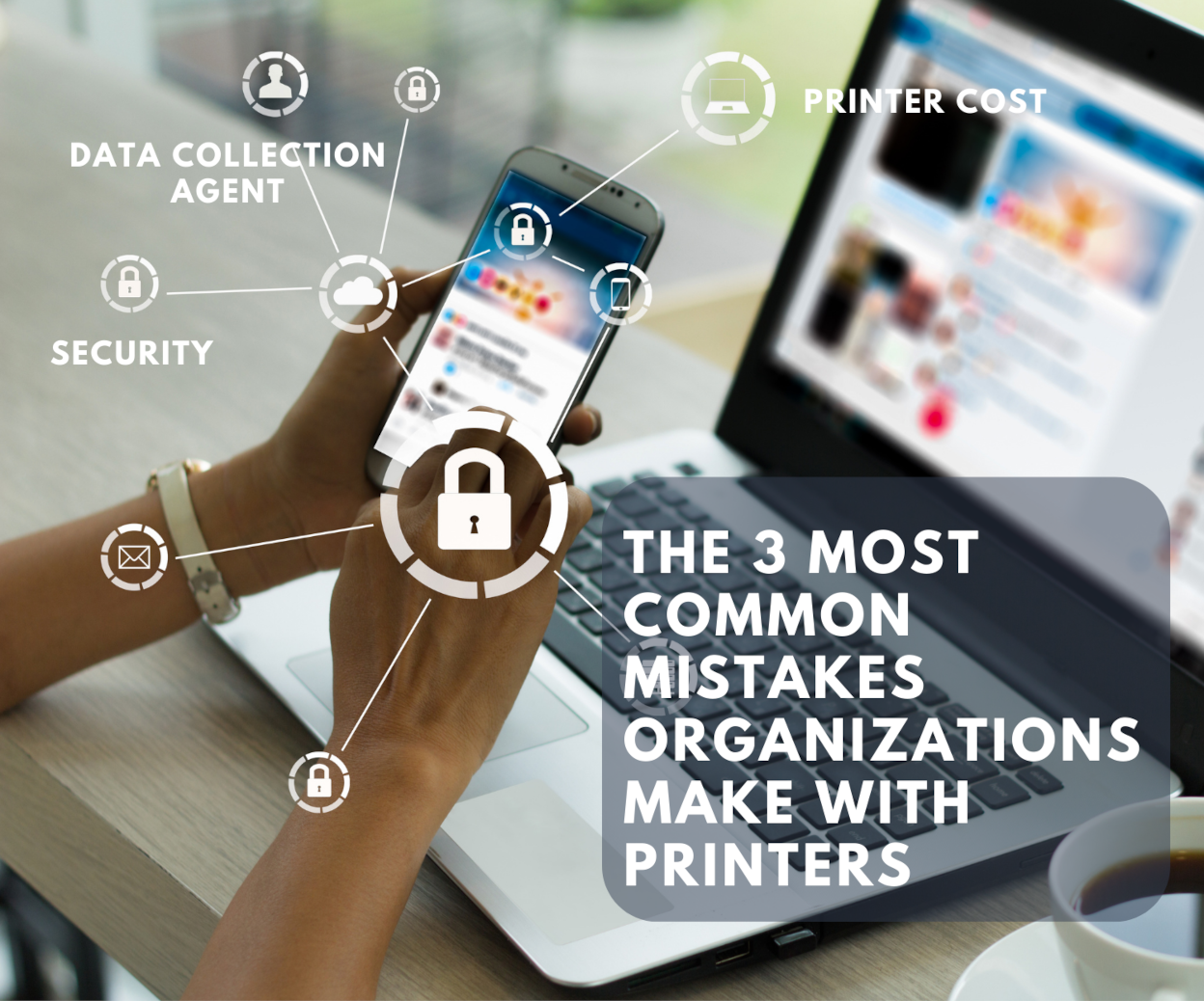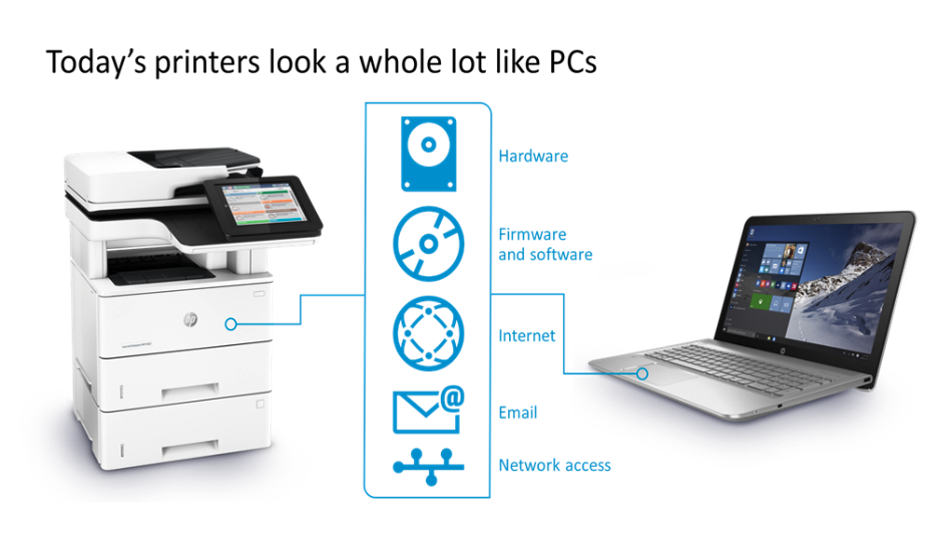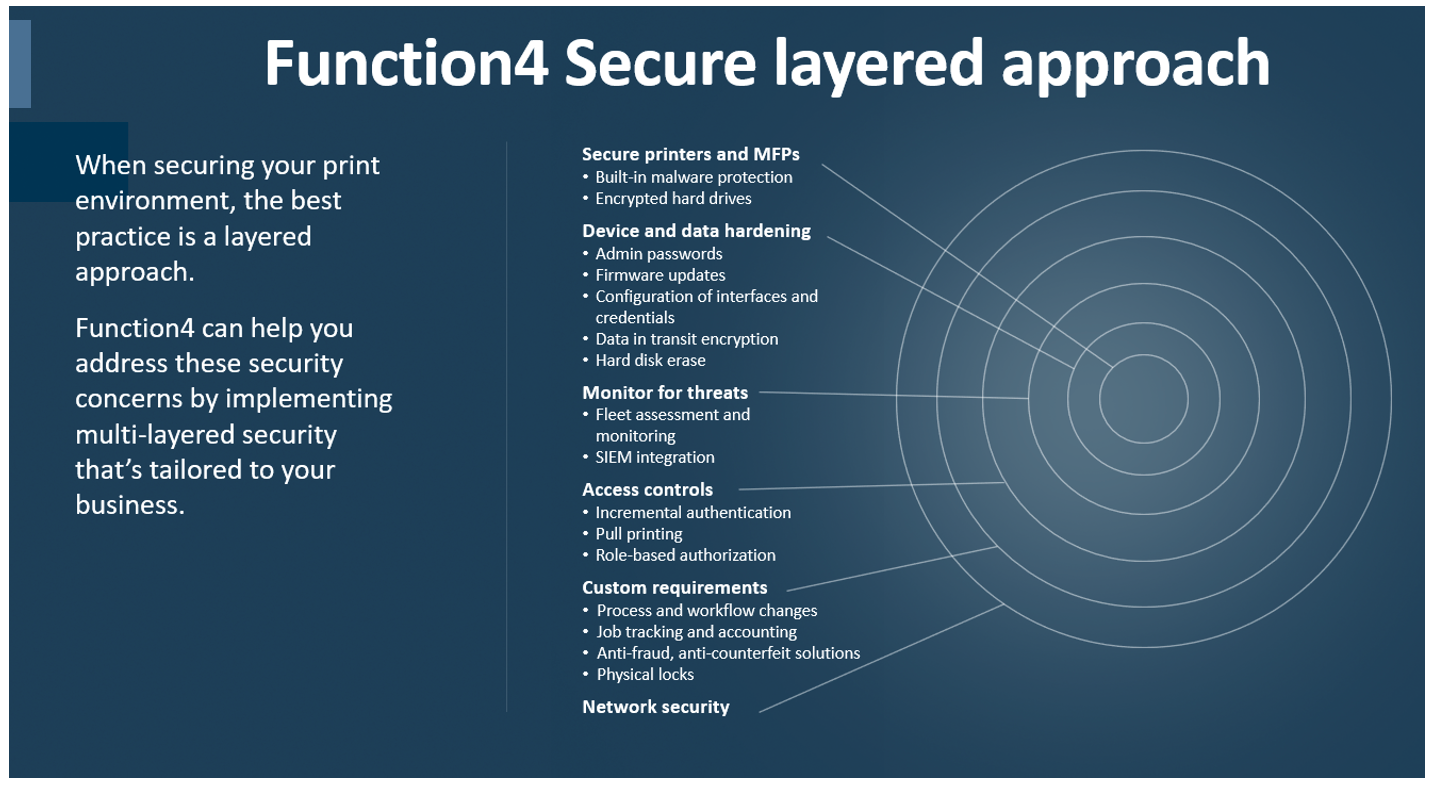The 3 Most Common Mistakes Organizations Make with Printers
December 18th, 2022 by Kevin Box

- Mistake No. 1 – Printer Buying is Decentralized
- Mistake No. 2 – Not Using a Data Collection Agent to Track Print Volumes
- Mistake No. 3 – A Lack of Concern with Printer Security
Mistake No. 1: Printer Buying is Decentralized – Some organizations leave printer buying up to the departments instead of having a buyer in purchasing do the heavy lifting. This is not an issue for a small organization, however for larger firms, this will create a cost and efficiency problem over time.
Why is this a problem? – The issue with decentralized printer purchasing is the end-user has no real understanding of the best practices around buying printers. If you’re buying over-the-counter (OTC) printers for example, you run the risk of getting a disposable printer that is more expensive to run and may not last exceptionally long. OTC printers are manufactured for home use and not for enterprise level printing. This means the device will break down faster at higher printing volumes and will have a higher Total Cost of Ownership.
What can be done to avoid this mistake? – A best practice is for organizations to centralize printer buying through either their Information Technology Department or through Purchasing, so new printer choices can be properly vetted. These departments should also develop standard guidelines for buying printers, which will help eliminate the practice of purchasing OTC devices less suited for enterprise level printing. This standards list should only include printers that are rated for enterprise level printing which are better suited for higher print volumes, are cheaper to operate, and have security built into the device.
Mistake No. 2: Not Using a Data Collection Agent to Track Print Volumes – The fact is, the more you know about the who, what, when, and where of your printing environment, the better you can manage, change, and optimize your printing habits in real-time.
Why is this a problem? – Organizations often have little insight into how much printing is taking place across the enterprise, which can lead to waste and higher costs. Organizations that don’t track their print volumes have no tangible way of knowing how much is being printed or a quantifiable way to track cost.
What can be done to avoid this mistake? – Data Collection Agents are often free to use and easy to install and can track the average monthly volumes for every printer on the network. This data will give the organization the insight needed to devise a plan for reducing print waste and cutting print costs.
Mistake No. 3: A Lack of Concern with Printer Security – An IDC study several years ago revealed that 60% of IT Managers don’t realize that printers are vulnerable to being hacked. The truth is hackers often look to exploit the weakest link to penetrate the network and printers are often the weakest link.
Why is this a problem? – Networks are more secure with more layers of security. Having a firewall in place is not enough to keep bad actors at bay. Organizations need layers of security to reduce the chance of being hacked, because once hackers get beyond the firewall through phishing emails for example, printers are easily exploited. Printers come out of the box with open ports, enabled protocols, and default factory passwords, so without proper remediation, these devices are still vulnerable to being hacked until human intervention closes these security gaps.

What can be done to avoid this mistake? – Like computers, it’s important to make printers part of your enterprise security policy. Printers typically have the same components as computers, but often lack the same security. Printers are equipped with hard drives, a graphical user interface, are connected to the network, to name a few similarities, but do not come with anti-virus software loaded on the device, which means the printer is vulnerable to security breaches. Purchasing an enterprise level printer that has security baked in will add more security layers at the device level.

When it comes to your printer fleet, a little can go a long way. Taking just a few key steps can help your organization save time, money, and help secure your printer fleet.
If you have any questions concerning this article or would like to have one of Function4’s Managed Print Services Specialist conduct a Cost Benefit Analysis on your printer fleet, reach out to me directly and I will connect you with a member of our team. I can be reached at kbox@function-4.com.
Posted in: Managed Print Services

